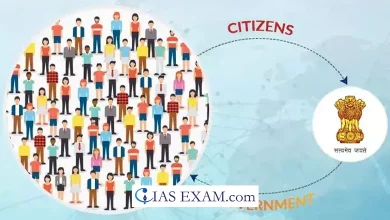Daily Current Affairs for UPSC
Changes to the Insolvency and Bankruptcy Code (IBC)
Topic- Indian Economy [GS Paper-3]

Context- Recently, the Ministry of Corporate Affairs MCA has proposed a broad range of changes to the Insolvency and Bankruptcy Code (IBC).
Key Highlights
Empowering National Company Law Tribunal:
- The ministry has proposed to empower the National Company Law Tribunal (NCLT) in order to slap hefty fines on those that contravene IBC rules.
- NCLT’s discretion has been increased in the new measures, hence focus will be on strengthening NCLT for effective implementation.
Fast-tracking the Process:
- It has explicitly clarified that the adjudicating authority must admit an insolvency case if the default is established and need not get into other specifics like the reason for the default, etc, which was delaying the admission of applications.
Electronic Platform Minimal Human Interface:
- The ministry has also suggested developing a state-of-the-art electronic platform that can handle several processes under the Code with minimum human interface.
- This e-platform may provide for a case management system, automated processes in order to file applications with the Adjudicating Authority (AA), delivery of notices, enabling interaction of IPs (Insolvency Professionals) with stakeholders, storage of records of CDs (Corporate Debtors) undergoing the process, and incentivising participation of other market players in the IBC ecosystem.
Recasting Liquidation Process:
- The liquidation process is sought to be made more open, flexible and equitable to provide comfort to the creditors
Redesigning the Fast-Track Corporate Insolvency Resolution Process (FIRP):
- The ministry has proposed redesigning the Fast-Track Corporate Insolvency Resolution Process (FIRP) to allow financial creditors to drive the insolvency resolution process for a CD outside of the judicial process while retaining some involvement of the Adjudicating Authority (AA) to improve the legal certainty of the final outcome.
- The resolution plan approved through this procedure will have the same sanctity as a regular plan approved during the CIRP (Corporate Insolvency Resolution Process).
Special framework for real estate:
- The ministry has pitched for a special framework for real estate in order to limit bankruptcy proceedings to only insolvent projects.
Transfer of the Ownership:
- Another proposal is to enable a resolution professional to transfer the ownership and possession of a plot, apartment or building to the allottees with the consent of the Committee of Creditors(CoC).
Multiple Resolution Plans:
- It will allow multiple resolution plans for a single stressed firm in all other sectors.
- The ministry also proposed a change in the mechanism to distribute resolution proceeds.
New Waterfall Mechanism:
- The MCA has proposed a new waterfall mechanism under which creditors will receive proceeds up to the stressed firm’s liquidation value in the order of priority already stipulated or secured financial creditors gets precedence over usually unsecured operational creditors.
- However any surplus over such liquidation value will be proportionately distributed among all creditors in the ratio of their unsatisfied claims.
Extension of Insolvency Framework:
- It extended the so-called prepackaged insolvency framework i.e. meant for only MSMEs–to larger entities.
Significance of Changes
- The changes will streamline several processes and procedures by the introduction of technology and bringing out clarity in relevant clauses to ensure smoother implementation.
- This will help cut delays in the resolution process.
- This will also prevent erosion of stressed asset value, somewhat discipline errant stakeholders.
- The recommendations on prepack and out-of-court resolution (fast track resolution) with optional moratorium as well as NCLT sanction will take India closer to overseas prepack regimes.
Conclusion
- Based on the past hurdles faced in several provisions and clauses, the ground level issues have been identified and proposed to be rectified step by step.
- Such recommendations, once implemented properly, would result in certain effective resolution of insolvency.
- However, insolvency regulator Insolvency and Bankruptcy Board of India (IBBI) should be conscious that these recommendations must not pave way for further litigations, which will stall the entire process of resolution.





.png)



